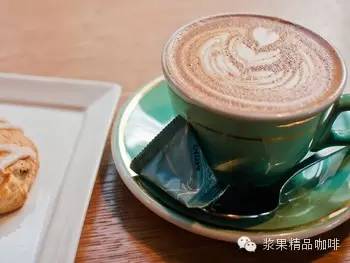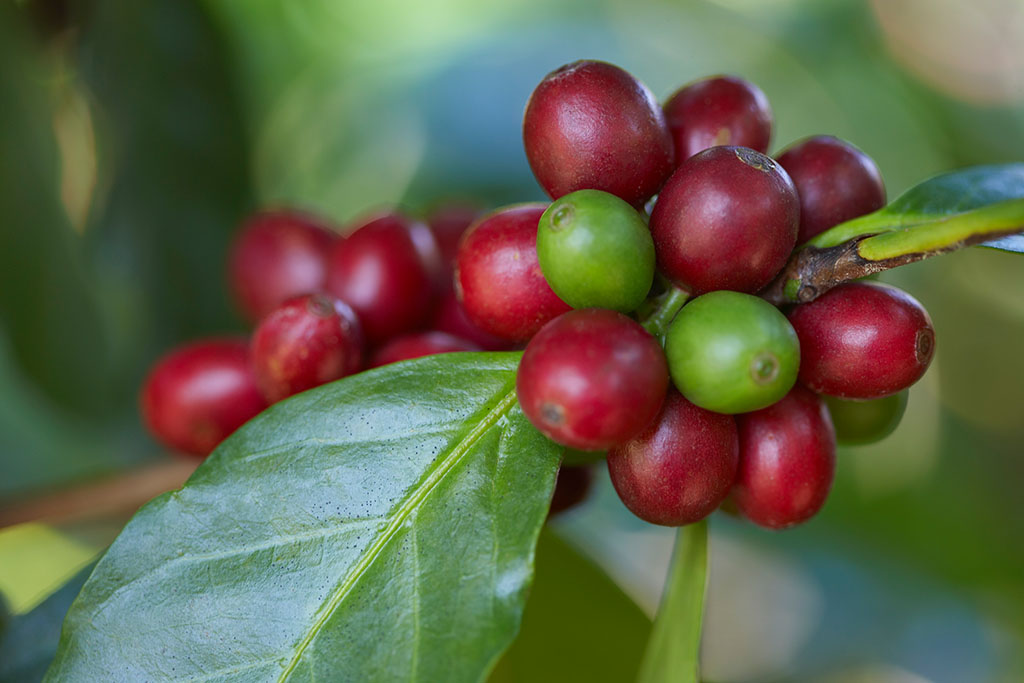Make perfect Italian espresso, espresso coffee machine oil extraction commercial coffee
Espresso is a much simpler process than it used to be. Baristas can improve coffee quality with the help of thermostats, electronic scales, laser scatterometers and other tools. We all know that espresso making is a rigorous science, but how many people can guarantee that the quality of coffee made every time is constant? I don't think it's about how advanced the tools are, but in a sense, advanced equipment has helped us improve the espresso process. The baristas of the past didn't have this equipment, and they didn't know espresso as well. The quality of each cup of coffee we made was different, and the perfect espresso was almost out of our reach, and even if we happened to make a cup of coffee that was close to perfect, we couldn't draw lessons from it. Normally, I make over 300 cups of coffee a day. I use Black Eagle espresso machines and Mythos and Clima Pro grinders. I also use electronic scales, and I create a daily recipe before I open my shop, and as I create the recipe, I keep trying until the coffee tastes sweet. Besides, I clean my coffee machine every 30 minutes. I'm a very careful person. If the scale says 10.6 grams instead of the 10 grams I set, I'll adjust it immediately to within 0.2 grams. If it takes too long to make coffee, I'll throw it away. I think that's the right way to make espresso. But am I really right? To answer that question, I invited one of the world's best baristas, my coffee hero, and my equally obsessive cleaner, Gwilim Davis.
Gwillim has been working as a barista since 1997. He has traveled to 36 countries and trained more than 40 baristas. He is the 2009 WBC Champion and currently the Chief Judge of World Coffee Events. He is a co-founder of Prufrock Cafe and runs a barista training academy near Prague, Czech Republic.
Me: Greetings, Gwilim! Thank you for coming here to discuss espresso with me. My first question is: What makes perfect espresso?
Gwillim: That's a good question. A lot of baristas have asked me the same question. My answer: only coffee you think is good espresso. What others call "perfect coffee" may mean nothing to you. For me personally, I use the WBC Sensory Rating Scale to objectively judge espresso coffee. I like the perfect balance between sour, sweet and bitter flavors, as well as the texture and aftertaste of coffee. I think espresso is really good coffee only if it has balanced taste, mild bitterness, medium acidity, rich taste, long lasting aroma and sweet taste. If coffee is not sweet, there is no balance between the various flavors, coffee purity, smooth, lasting taste and pleasant aftertaste is also an important criterion for me to judge coffee quality. Truth is, I've never tasted perfect espresso. Usually, coffee lacks sweetness or a lingering aroma. If I have to define perfection, I think sweetness and aftertaste are the most important.
Me: What should we pay attention to when making espresso coffee?
Gvelim: In order, they are: high quality fresh coffee beans, bean grinder blades sharp enough, and filtered water. Be sure to change the filter elements regularly. To ask about taboos in the Italian espresso process, I think there are two points:
1. Uncleaned coffee or bean grinder
2. Coffee powder is not evenly distributed in the filter bowl
It's not enough just to smooth the ground coffee with your fingers. You must ensure that the coffee powder is evenly distributed at the bottom and top of the bowl. I gave up hand-smoothing coffee a long time ago. Now I use the horizontal + vertical smoothing method to ensure that the coffee powder is evenly distributed before pressing.WBC coffee making instructions have some reference value, but I think it is not enough to just follow the steps in the guide, I have seen a lot of baristas who can make high quality coffee in the competition, but in my opinion, they are not qualified to work at Prufrock.
Me: What are your parameters based on? Taste, extraction, time or?
Gwillim: I set the parameters according to the proportion of water powder. If there is still a problem with the taste of coffee, I will check the extraction time. Whenever I get a new coffee bean, I try it at three ten percent ratio. The set ratio is usually around 50% EBF (coffee powder: total coffee weight =1:2). I'll adjust the total weight of the coffee based on the sweetness of the coffee to increase the sweetness of the coffee. In the past, I used to fret all day about the taste of coffee, but since I started using the 3-step gouache ratio test, I can easily adjust and determine the best way to make it. I don't think extraction time has much effect on coffee quality, as long as you know the recipe, even a 4-second error is perfectly fine. At my training institute, I ask my students to make coffee in 19-24 seconds; when I travel to other countries, I make coffee in 27 seconds; at Prufrock, the clerk can even make coffee in 36-40 seconds. If I want my coffee to taste purer, I'll make it shorter; if I want it to taste richer, I'll make it longer, and avoid caffeine taking too long to make it with a burnt taste that disrupts the balance of flavors. Sometimes I measure coffee extraction, but most of the time it's unnecessary. If you make coffee long enough, you can probably guess the extraction level without using a laser scatterometer.
Me: How do you keep coffee quality constant throughout the day?
Gwillim: If your equipment and coffee beans don't change, the quality of the coffee won't fluctuate too much. I attended the London Coffee Festival in 2014, and because of the excitement, I had to adjust the recipe throughout the day. To answer this question, you have to figure out how coffee quality is constant. First, coffee beans. Is the solubility of your coffee consistent? Do you use the same blend or single coffee? Is the coffee roasted evenly? Next is the bean grinder. If the grinder blades aren't sharp enough, you'll never be able to guarantee consistent coffee quality. Also, make sure the grinder is kept at a constant temperature. Temperature changes can alter yield, grind uniformity, extraction temperature and extraction rate. Again, the technique of production. Are you consistent in the way you press powder? Did you press too hard? Do you always check the pressure of the pressing powder? And the coffee machine. Is the temperature of the coffee machine constant? If it gets too hot, will the water flow speed increase? Can the coffee machine open both heads at the same time at the same pressure during the busiest hours of the day? Does the pressure inside the coffee machine vary throughout the day? Is the coffee machine clean enough? Any change in factors can cause coffee quality to be inconsistent. Be sure to find out exactly which link has the problem and solve it in time. If the coffee shop has a lot of traffic, you'll find that the grinder's settings get finer and finer over time, so you have to reset them the next day. In addition, you must also help the coffee machine cool down in the afternoon, otherwise the temperature of the equipment will affect the quality of coffee.
How often do you clean your coffee machine?
Gwillim: I clean the coffee machine before I make each cup. That's why my coffee is better than most people's.
Me: Can you tell me about your three most impressive espresso cups so far?
Gwillim: I had an espresso at the Square Mile in 2008. The coffee was made by Anette from Coffee Collective, and it completely changed my opinion of espresso. I didn't really like the smell, but I didn't hate it, and I was confused.
An experience since then has changed my barista trajectory yet again. In March 2013 I visited a trainee near Prague taught by Petra Vesela, who made me a cup of coffee with drip roasted yegga sherphine. The coffee is approximately 45% water powder, takes 22 seconds to make, and has a water temperature of 92℃. I've never made espresso from lightly roasted beans before, nor have I ever tried to make Arabica coffee in such a short time and at such a low temperature. The coffee was perfectly balanced and surprisingly sweet, so I called my clerk and told him I'd be late.

Important Notice :
前街咖啡 FrontStreet Coffee has moved to new addredd:
FrontStreet Coffee Address: 315,Donghua East Road,GuangZhou
Tel:020 38364473
- Prev
Espresso extract three variables espresso coffee oil Italian blend of coffee beans
Cup size and dose if you are making a large cup of milk coffee, a small dose of concentrated milk can be drunk alone, pour in 300ml milk, and the concentrated flavor will be diluted immediately. At this point, you need to increase the amount of powder (to get more concentrated dose) to enhance the concentrated flavor of the milk coffee. On the contrary, pure black coffee or small-dose milk coffee need to reduce the amount of powder. Milk coffee in many boutique cafes, strong
- Next

Haru Cooperative Gedeo- Yega Sheffield Ethiopian Coffee
Yega Xuefei is a small town, 700-21000 meters above sea level, synonymous with Ethiopian boutique coffee. It has been a wetland since ancient times. The ancient saying "Yirga" means to settle down and "Cheffe" means a wetland. The mode of production and flavor of coffee here are so outstanding that Ethiopian coffee farmers compete to take pride in the flavor of their coffee, and thus become Africa.
Related
- Detailed explanation of Jadeite planting Land in Panamanian Jadeite Manor introduction to the grading system of Jadeite competitive bidding, Red bid, Green bid and Rose Summer
- Story of Coffee planting in Brenka region of Costa Rica Stonehenge Manor anaerobic heavy honey treatment of flavor mouth
- What's on the barrel of Blue Mountain Coffee beans?
- Can American coffee also pull flowers? How to use hot American style to pull out a good-looking pattern?
- Can you make a cold extract with coffee beans? What is the right proportion for cold-extracted coffee formula?
- Indonesian PWN Gold Mandrine Coffee Origin Features Flavor How to Chong? Mandolin coffee is American.
- A brief introduction to the flavor characteristics of Brazilian yellow bourbon coffee beans
- What is the effect of different water quality on the flavor of cold-extracted coffee? What kind of water is best for brewing coffee?
- Why do you think of Rose Summer whenever you mention Panamanian coffee?
- Introduction to the characteristics of authentic blue mountain coffee bean producing areas? What is the CIB Coffee Authority in Jamaica?

